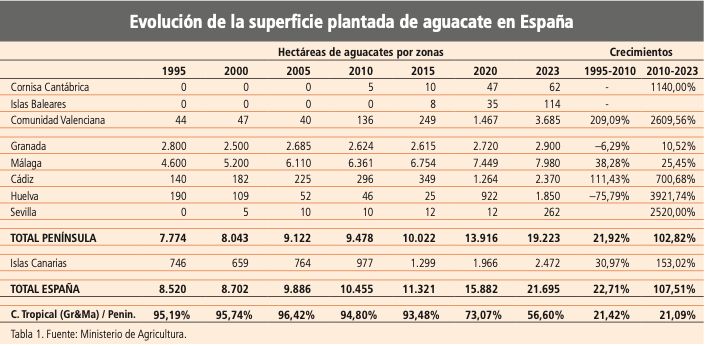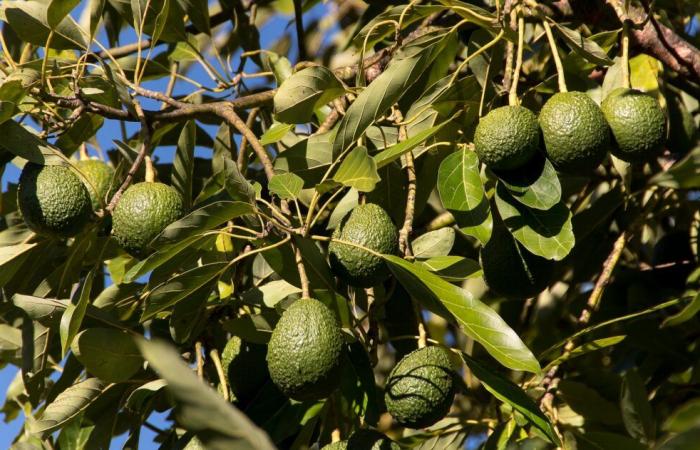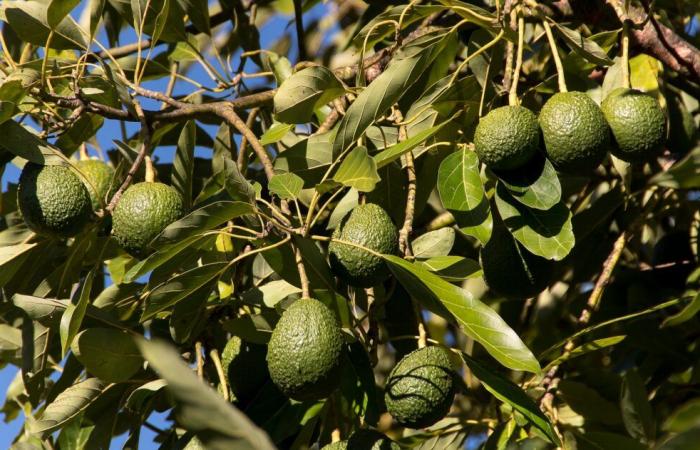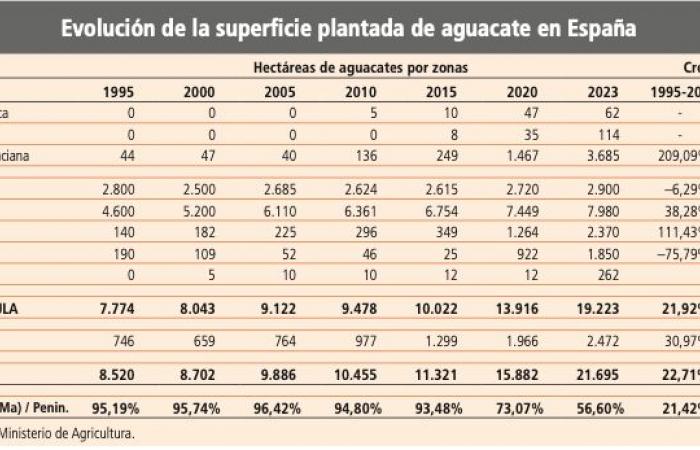The fruit and vegetable consultant, Paco Borrás, talks about the surface of avocado in Spain and its evolution with the passage of time
Paco Borrás
The most recent official data of the hectares of avocados planted in Spain are those published by the Ministry of Agriculture and were published in 2023, which implies that they were collected throughout the previous year. Therefore, it is very likely that for 2023 and 2024 new plantations have been produced, especially in the new areas of Cádiz, Huelva and the Valencian Community. But, if we stick to the published data we have the information we can see in Table 1.
From the commercial point of view, the production of the Canary Islands, so far seems to be consumed entirely there, so for commercial purposes it has not had any incidence in the Peninsula. According to the Ministry data, its 2,472 hectares are producing 14,638 tons that imply a consumption close to 6 kilos per capita, which seems very high. Another issue is whether the number of hectares continues to increase and therefore it is normal for Canarian producers to have begun to organize and have registered the Canary Avocado IGP.
If we observe that it has happened in the Peninsula, we see how there are clearly two periods within the figures analyzed. From 1995 to 2010, the Costa Tropical, Granada and Malaga, has represented 95% of the total area planted in Spain. We cannot forget that it was at the beginning of the 16th century, when the first plants of Mexico were brought they were located in the Canary Islands and on the Tropical Costa because at that time they imagined as the areas most similar to where they met in Mexico. On the other hand, it is true that at the level of loose trees there were many places in Spain where they were planted and collected for domestic consumption, both in the Cantabrian cornice and in the Valencian Community and in other Andalusian provinces.

The picture shows us how in the total period analyzed Granada only 10.52% grow and Málaga 25.45%, while the whole peninsula bent in hectares.
We see in the painting that at the peninsular level the Tropical Costa remains a leader but now with 57%. The Valencian Community would follow with 19.29%, the province of Cádiz with 12.32%and that of Huelva with 9.62%. The weight of Seville, the Balearic Islands or the Cantabrian cornice is still a minority. For the moment. This new trend will gradually give a greater dispersion to the marketers who until recently were concentrated on the Tropical Costa and in particular in the Axarquía region.
The analysis of imports, which last year were 262,071 tons, were operated by 75 percent by the marketers of Granada and Malaga, so the management of the whole of the avocados from Spain in those provinces follows. Over the next few years we will see the performance of production in the new areas which will directly affect its consolidation or not.
From the varietal point of view, the trend of almost all areas is mostly Hass except in the Valencian Community where almost half is Lamb Hass, apart from pollinators. Worldwide, the plantations that are made thinking about export in its vast majority are Hass.
HORTOFRUTICAL CONSULTOR
Access to the article on page 8 of the Avocado dossier in the Valencia Fruits copy.full access to the last specimen of Valencia Fruits.
--







